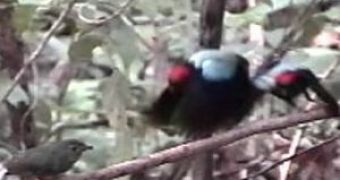It sounds like in humans: pals go together to pick up chicks, but only the handsome one gets the girls.
So, why do some individuals help others without having any obvious interest? Cooperative behavior has puzzled since ever the researchers, because this can stand only for a less apparent reason.
In the cases when cooperation happens in close-knit family groups, kin selection is a strong reason: in fact, everybody in the group carries the same gene pool. This is not the case of lance-tailed manakin, a small tropical bird, in which unrelated males cooperate in fascinating courtship displays, and the income of helping the other only comes years down the line. These males do not fight over females; instead, the pairs of male lance-tailed manakins team up to conquer eventual sex mates.
Manakins are well known for their mating dances, tightly synchronized "leapfrogs" and flights to turn on the opposite sex. But in the end, only the best, the alpha male, will be the one inseminating the female.
Since 1999, Emily DuVal, of UC Berkeley's Museum of Vertebrate Zoology, investigated in Panama this species in order to find an answer to this cooperative behavior on subordinate beta males. She managed to see how birds' status shifted over multiple years, and DNA analyses revealed the chicks' paternity and kin relationships among adults.
The research revealed that male partners were not related, and betas rarely fathered chicks, rejecting two of the major hypotheses behind males' cooperative behavior. After years, beta males were found to become alphas more often than other males, but not always in the same territory where they were betas.
Even when there were no local alpha males, some betas went away as helpers elsewhere rather than assuming the alpha position. "Without being an alpha, there's essentially no chance for these males to reproduce," says DuVal. "My results suggest that betas could actually benefit from staying betas for a while, for example by gaining courtship skills during a sort of apprenticeship or by forming alliances with other males who later act as their betas."
This is very different from what was found in other bird species with cooperative courtship displays: wild turkeys display cooperatively with their brothers, and ruffs (a shorebird) present male alliances in which each partner has the right to mate.

 14 DAY TRIAL //
14 DAY TRIAL //